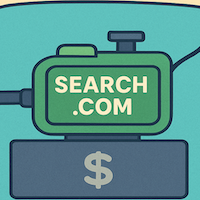Triggered emails should be on marketers’ radars, according to findings from Epsilon and its own Email Institute in their “Q3 2012 Email Trends and Benchmarks” report.
Not only are triggered emails becoming more popular, they’re also driving significantly better results.
Overall performance
Using data based on 6.4 billion emails sent in the third quarter of the year across various industries and 170 participating clients, Epsilon found that the average company’s email marketing messages had a non-bounce rate of 96.1 percent, nearly the same as the 95.9 percent rate observed in the previous quarter.
Meanwhile, the average company’s open rate was 27.2 percent in the third quarter, up from the 25.6 percent observed in the second quarter and up even higher from the 23.8 percent rate seen in the third quarter of 2011.
The average company’s click rate was 4.5 percent in the third quarter, up from 4.4 percent in the previous quarter but down from the 5.5 percent click rate in the third quarter of last year.
Not including triggered and real-time messages, Epsilon found that the average volume per client declined by 9.7 percent quarter-over-quarter and 8.9 percent year-over-year. “This suggests marketers are sending more triggered and real-time messages vs. business as usual and batch messages,” the company notes in its report. More on that later.
Industry performance
According to Epsilon, nine of the 13 industries included in the report saw open rates rise 5 percent or higher year-over-year. Financial Services CC/Banks boasted the highest open rate with 38.3 percent, followed by Retail General with 36.2 percent, Consumer Products Pharmaceutical with 35.5 percent and Travel/Hospitality Travel Services with 32.3 percent.
Meanwhile, Consumer Products CPG saw its click rate hit 8.5 percent in the third quarter. Financial Services General followed with a click rate of 6.2 percent.
Consumer Products CPG also boasted the highest click-to-open rate with 43.2 percent, followed by Consumer Publishing/Media General with 32.0 percent and Business Publishing/Media General with 21.0 percent.
Campaign performance
Marketing messages accounted for 64.0 percent of the emails deployed via Epsilon’s platform in the third quarter, while service accounted for 5.7 percent, editorial for 0.4 percent, acquisition for 0.2 percent, research for 0.1 percent and other for 29.8 percent.
Service emails boasted the highest open rate with 49.7 percent, followed by editorial emails with 32.7 percent and research emails with 24.7 percent.
Editorial emails had a click rate of 8.3 percent in the third quarter, followed by service emails with 7.6 percent and research emails with 3.8 percent.
Meanwhile, editorial emails boasted the highest click-to-open rate with 25.3 percent, followed by research emails with 15.5 percent and service emails with 15.2 percent.
Triggered emails
Epsilon notes that it compiled data from more than 166 million triggered emails in the third quarter, from campaigns deployed as a result of an action (e.g., welcome, thank you, abandoned shopping cart and confirmation).

In the third quarter, triggered emails accounted for 2.6 percent of total email volume, a 10.3 percent increase from 2.3 percent share in the third quarter of 2011.
Non-bounce rates for triggered messages were 94.7 percent in the third quarter, 1.4 percent below the rates observed for business-as-usual (BAU) emails.
Triggered messages fared much better when it came to open rates, as these messages boasted an open rate of 47.7 percent in the third quarter, 75.1 percent better than the open rate for BAU emails.
Meanwhile, triggered emails had a click rate of 9.7 percent, 114.8 percent better than BAU emails.
“Email continues to be an effective means to reach consumers with valuable information and to drive sales,” Epsilon notes in its conclusion. “However, simply sending messages will not deliver results. Marketers need to know their consumers, understand their behaviors and use this insight to develop a segmentation strategy that provides relevant and timely messages at the proper cadence. Only then can marketers leverage the email channel to its full capacity to reap all of its benefits.”
Epsilon also notes that these numbers form benchmark data that should be used only as a guideline.
Segmentation
A recent study from Lyris found that 89 percent of U.S. digital marketers use email marketing newsletters, while 86 percent use promotions and discounts, 76 percent use free content (e.g., guides, webinars), 56 percent use free trial offers, and 39 percent use sweepstakes.
Lyris found that 85 percent of marketers said list segmentation and targeting is the most used technique. Thirty-nine percent of marketers said segmenting email marketing lists by demographics is the most effective method of segmentation, followed by 28 percent who pointed to purchase history, 26 percent who pointed to open rates and 25 percent who pointed to click-through rates.
By Jason Hahn

 Network
Network

